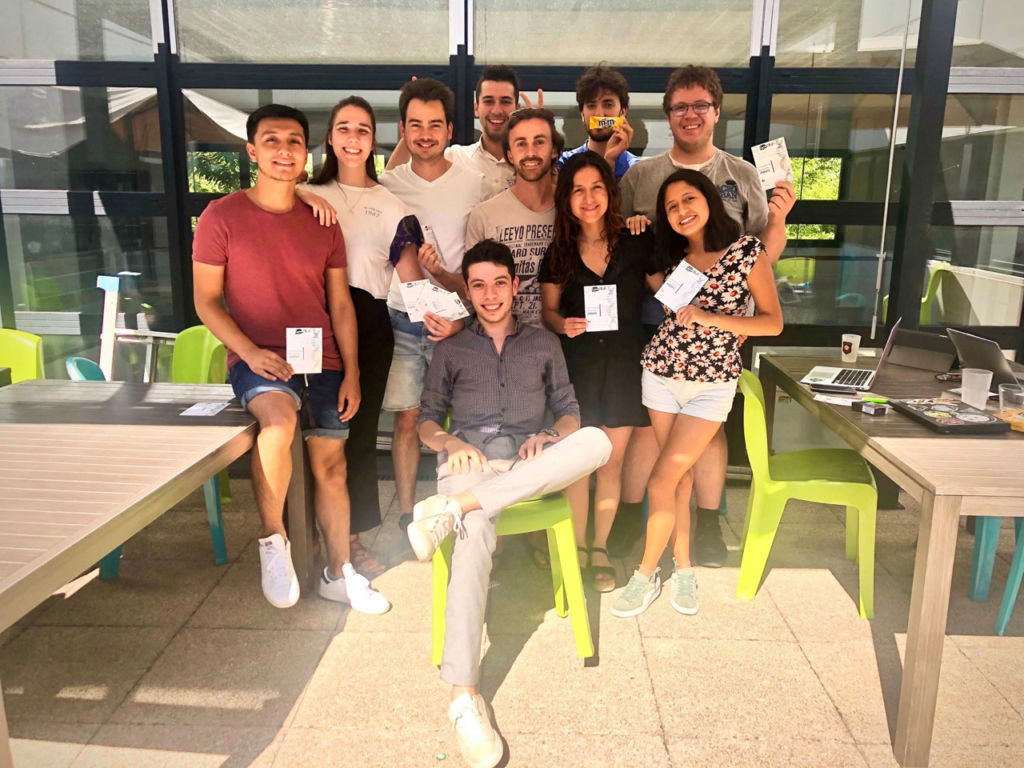UM researchers win gold in Boston
For the second year running, a team of UM students has won a medal atIGEM, MIT's major international synthetic biology competition.
The 14 students, who were in Boston on November 5, worked on a new medical molecular tool. A protein scissors that could find numerous therapeutic applications. Project name: Karma!
Coming from Sanskrit, the word karma could be translated as "action". A word that sums up the energy of this new team from Montpellier, who took part in the prestigious International Genetically Engineered Machine competition (IGEM). In Boston, they defended their project against 340 teams selected from 40 countries, including Stanford and Oxford.
Elsa Frisot is a PhD student at the Center for Structural Biochemistry (CBS). She took part in last year's competition with the Vagineering project, and was keen to repeat the experience, this time as a supervisor. "We selected the candidates on the basis of their applications in January. There are a lot of biologists who apply, but all students can take part. We need computer scientists, communicators, legal experts, graphic designers, etc."
Targeting proteins
Once the team was formed, the fourteen young researchers had to develop a research project. Inspired by the CRISPR cas 9 tool, a genetic scissor that can target and cut a specific DNA sequence, they came up with the idea of designing a molecular tool that would function like a protein scissor.
"In many pathologies, such as cancer or Alzheimer's disease, research has identified the role played by certain proteins in the development of the disease", explains Thomas Bessede, a student in Master 1 BIOTIN (Master Biologie santé). Current drugs use chemical molecules to break them down". The problem is that these molecules don't always simply destroy the offending proteins, leading to side effects.
Molecules capable of degrading proteins also exist in our bodies, known as proteases. Some of these are highly specific, enabling them to effectively target a particular type of protein. Unfortunately," explains Elsa Frisot, " we don't have a specific protease for every type of protein. There are aspecific proteases, but here too, they run the risk of causing side effects.
A research head
The students then imagined an association between these non-specific proteases and antibodies, whose strength is that they are truly designed to target a protein. "Today in the lab, we can design antibodies for anything. Each antibody has the ability to bind to a precise target thanks to a small part called the VHH", describes Thomas Bessede. This VHH functions as a sort of "seeker head", which the IGEM team has fused with the protease to bring it to the desired target.
To test this concept in the laboratory, and prove that their scissors were indeed capable of cutting a protein at the desired location, the biologists had just three months - a real challenge! They used GFP, a protein capable of scattering green fluorescent light, to which they added a small tag blocking this fluorescence. "Our VHH was designed to target a specific motif placed on the tag. The aim was to guide our protease onto this tag to degrade it and allow the GFP to glow again. That's what happened, so we have proof of concept," enthuses Thomas.
Proof of concept
The experiment was then confirmed using the same VHH, but this time replacing GFP with another protein. "As our VHH was designed to specifically target GFP, it should have had no effect. Here again, we have confirmed our proof of concept" concludes the biologist.
Faced with competition from the major Anglo-Saxon universities, the Montpellier-based team did not expect to win the Grand Prix, but they were nevertheless aiming for a gold medal. And so they did! "It's a great project and we met all the criteria! These criteria do not stop at the scientific dimension of the project. The MIT competition also aims to highlight other aspects of research, such as fund-raising with private and public partners, building a website and scientific communication.
A "caravatour
"All summer long, we promoted science to the general public by criss-crossing the region in a caravan," explains Elsa Frisot. The team also took care of the ecology aspect, creating an educational work of art in partnership with students from Nantes, using all the waste generated by their experiments. "In just three weeks, we generated 20 kg of plastic. Science pollutes a lot, so we also wanted to raise awareness of this lesser-known aspect of research," stresses Thomas Bessede.
Recognized and rewarded, the KARMA project now sits patiently in the CBS fridges, in the hope that a motivated researcher will extend the experiment to develop its full potential. Find out more about this adventure on theIGEM 2019 website.

